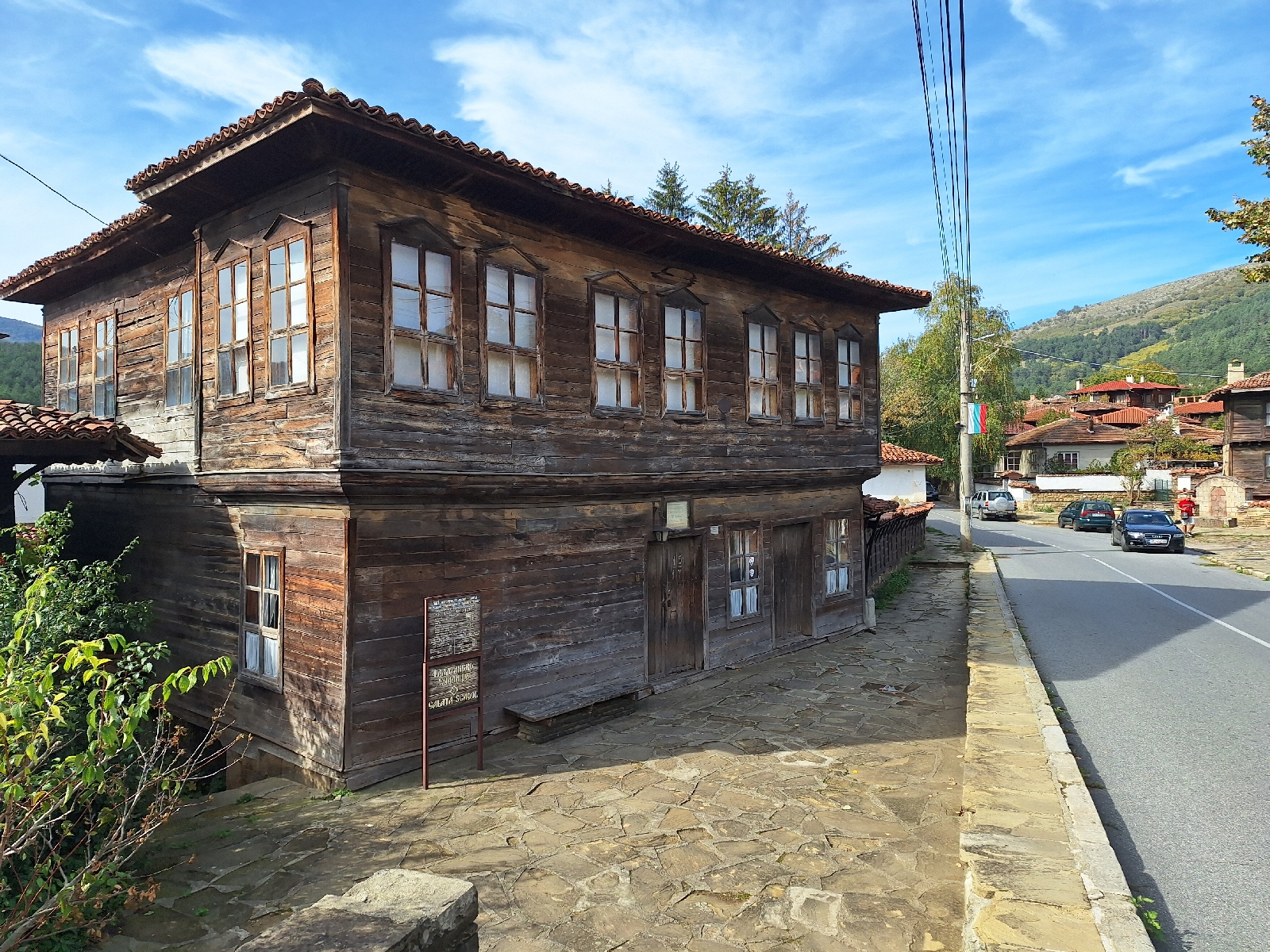A day of rest, planning, shopping and discovering the history of a Bulgarian revolutionary.
I spent much of the morning in thought: what to have for breakfast; where to stay for the next few nights given distances and elevation gains between huts, whether I could discard anything to reduce my rucksack's weight and how much food to buy. Then I walked into the centre of town. My morning coffee was in the cobbled, main square, where people were sitting chatting under two large trees long after they had finished their drinks.
The higgledy piggledy arrangement of streets marked Kotel as a town of ancient foundation. I particularly admired the few remaining old, brown, wooden buildings. A revolutionary called Georgi Sava Rakovski was born in the town and a mural, museum, statue and numerous banners celebrated this fact using an image of him with a drooping moustache. Bulgaria was occupied by the Ottoman Turks from 1396, but in the 19th century there was a revival of Bulgarian national feeling, and a series of failed insurrections against the Turks. Rakovski was one of those agitating for independence, particularly through his literary work. A novel I am reading called "Under the Yoke" by Ivan Vazov is also set in this period of unsuccessful attempts to throw off Ottoman imperialism. It was written in 1888 not long after Bulgaria finally gained its independence in 1878 thanks to Russia. I visited the Historical Museum beside the main square which is also the mausoleum of Radovski. Although it's main focus is the fight for statehood in the 19th century there are an eclectic collection of other historical items including Sumerian clay tablets from thousands of years BC, a preserved heart of some important person and a reproduction of a school room. The collection of early books in Bulgarian and an ancient printing press was perhaps more relevant to the rise in Bulgarian national feeling. The Orthodox Church was a means of maintaining Bulgarian identity during the years of rule by the Muslim Turks. I visited two of the churches, similar in style with pale blue ceilings and white columns. The iconostasis in an Orthodox Church separates the congregation from the alter and carries icons of Christ, the Virgin Mary and numerous saints. In the church of St Peter and Paul it was a delicately carved wooden structure.
After a relaxing afternoon, a walk in the park by my hotel, which also has memorials to what I assume were 19th century revolutionaries, I ate dinner in the hotel's restaurant. I thought there might be a singer, they set up for one, but maybe they decided against it as I was the only diner. October seems a quiet period...





No comments:
Post a Comment